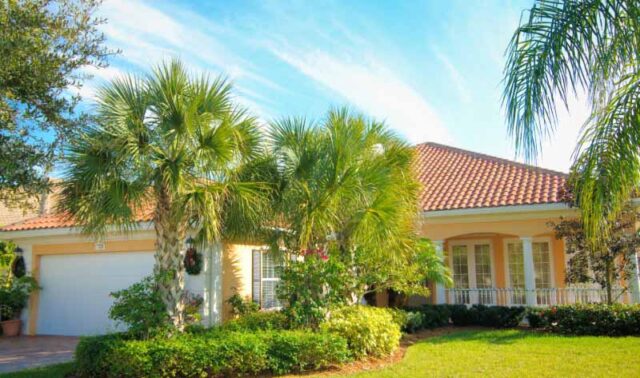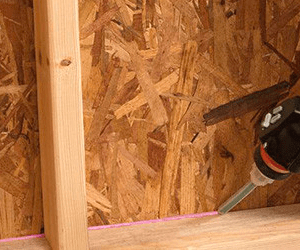Fiberglass insulation has been around for decades, earning the nickname the “grandfather of insulation.” It was the first widely used type of insulation in homes across America. And even though there are newer products on the market, fiberglass insulation is a great choice for homeowners who want comfort, efficiency, and savings without the high price tag.
Modern installation methods have given fiberglass a major performance boost. When combined with air sealing, it delivers strong thermal performance at a fraction of the cost of premium products like spray foam insulation.
Insulating your home is one of the smartest upgrades you can make to cut energy bills. Choosing to use fiberglass insulation in smart ways can help you save money and keep your Florida home cool and comfortable all year long.
Why Proper Insulation Matters in Florida
 Living in Florida, our hot, humid climate can send your energy bills soaring. This makes cooling costs a major challenge in our region, especially when your HVAC system consumes 40% or more of your annual home energy use. Most of that is from your AC in the summer.
Living in Florida, our hot, humid climate can send your energy bills soaring. This makes cooling costs a major challenge in our region, especially when your HVAC system consumes 40% or more of your annual home energy use. Most of that is from your AC in the summer.
The sun’s heat constantly pushes through your roof, walls, windows, and small air gaps, contributing to over half of your home’s cooling load. Without proper insulation, that cool air your AC works so hard to produce slips right out.
Good insulation slows heat transfer, helping to keep cool air in and hot air out. It’s estimated that up to 70% of your home’s energy use goes toward heating and cooling. Proper insulation can dramatically lower your energy costs while keeping indoor temperatures consistent. The Florida Department of Environmental Protection also notes that insulation helps maintain comfortable living spaces while reducing the load on your HVAC system.
Attic Insulation: Your Best Investment
Your attic is the top place to insulate in your Florida home for the quickest insulation returns. Since hot air rises, an under-insulated attic lets massive amounts of heat pour into your home. Plus, the sun’s heat that is absorbed down through your roof. In fact, your roof and attic can account for more than 20% of the heat gain your AC has to fight.
Adding attic insulation is one of the easiest and most affordable upgrades you can make for your home. Blown-in fiberglass works great because it blankets the attic floor and works over and around obstacles like joists, wiring, and ductwork.
Florida follows the 2023 state building code that requires certain levels of insulation for new homes in both of Florida’s climate zones. Most of our state falls in Climate Zone 2, which is classified as a hot humid climate. For attics/ceilings in Zone 2, an insulation level of at least R-38 is needed to effectively insulate. This equals about 10–14 inches of total fiberglass thickness. Since fiberglass is lightweight, it can be layered to reach the right thickness.
Many Florida homes have well under the recommended amount of attic insulation. If you have less than 6-7 inches of insulation (roughly equal to about R-22) in your attic, your home would greatly benefit from adding more.
Before installation, it’s crucial to seal air leaks around vents, light fixtures, and pipes. Also check that bathroom and dryer vents exhaust outside instead of into your attic to avoid adding moisture.
Once installed, attic fiberglass acts as a thermal buffer, keeping your home cooler longer and preventing your furnace from overworking in winter. A well-insulated attic is one of the fastest ways to save money and boost your home’s comfort.
Combining Fiberglass Insulation with Air Sealing
To get the best results, fiberglass should always be paired with proper air sealing. While fiberglass slows heat transfer, it doesn’t stop air movement on its own. Gaps and cracks around fiberglass batts can allow conditioned air to escape. These unintentional tiny leaks add up to the same effect as leaving a window open year-round. They not only waste valuable energy, but they drive up your utility bills too.
 By sealing air leaks first, around key places like your attic floor penetrations, vents, windows, doors, and wall outlets, you keep cool air inside and hot, humid Florida air out. Use caulk, spray foam, or weatherstripping to seal these common areas before installing or upgrading insulation. Next, add fiberglass insulation to help maintain that barrier. This combination can lower your home energy efficiency costs by about 15% and reduce the wear and tear on your AC system.
By sealing air leaks first, around key places like your attic floor penetrations, vents, windows, doors, and wall outlets, you keep cool air inside and hot, humid Florida air out. Use caulk, spray foam, or weatherstripping to seal these common areas before installing or upgrading insulation. Next, add fiberglass insulation to help maintain that barrier. This combination can lower your home energy efficiency costs by about 15% and reduce the wear and tear on your AC system.
Sealing leaks and insulating also improves your home’s indoor air quality by keeping out dust and pollen, leading to better comfort and a healthier home.
Together, fiberglass and air sealing enhance thermal resistance, reduce drafts, and create a tighter, more energy-efficient home.
Why Homeowners Choose Allweather Insulation
Founded in 1955, Allweather Insulation has served North Florida and South Georgia for generations. Our family-owned company provides professional installation for insulations such as fiberglass and spray foam insulation, and fireproofing systems that improve comfort and home energy efficiency.
We install fiberglass products from trusted brands like Owens Corning, CertainTeed, Johns Manville, and Knauf. Each of these is designed for durability, fire resistance, and long-term value. Whether you need new attic insulation, wall upgrades, or help choosing the right insulation material, our team ensures your fiberglass is properly installed with the right vapor barrier and sealing techniques for maximum efficiency.
With its ease of installation, strong thermal resistance, and proven performance, fiberglass remains one of the most cost-effective ways to improve comfort and save money on energy bills.
Upgrade Your Home’s Comfort Today
Fiberglass may be the “grandfather of insulation,” but it’s still a top performer when installed the right way. From drafty attics to under-insulated walls, it delivers dependable comfort and energy savings year after year.
Ready to improve your home’s efficiency and comfort? Contact us today for a free estimate.
______________________________________________________________________
References
Building America Solution Center. (n.d.). Dense-pack insulation. Pacific Northwest National Laboratory. https://basc.pnnl.gov/redcalc/tool/dense-pack-insulation
Florida Department of Environmental Protection. (2020). Florida green lodging program: Best management practices for energy efficiency. https://floridadep.gov/sites/default/files/FGLP_BMP_%20ENERGY_EFFICIENCY_2020.pdf
Insulation Institute. (n.d.). 2023 Florida building code. https://insulationinstitute.org/wp-content/uploads/2025/05/N117-FL-Energy-Code-0425.pdf
National Renewable Energy Laboratory. (2002). Weatherization assistance program in Florida. U.S. Department of Energy. https://docs.nrel.gov/docs/fy02osti/30649.pdf
U.S. Department of Energy. (n.d.). Insulation materials. Office of Energy Efficiency & Renewable Energy. https://www.energy.gov/energysaver/insulation-materials
U.S. Department of Energy. (n.d.). Types of insulation. Office of Energy Efficiency & Renewable Energy. https://www.energy.gov/energysaver/types-insulation#:~:text=The%20foam%20webbing%20around%20the,include%20polystyrene%20beads%20and%20perlite
U.S. Environmental Protection Agency. (n.d.). Air sealing guide for contractors [PDF]. Energy Star. https://www.energystar.gov/sites/default/files/asset/document/DOE_Air%20Sealing%20Guide%20for%20Contractos.pdf
U.S. Environmental Protection Agency. (n.d.). Why seal and insulate? Energy Star. https://www.energystar.gov/saveathome/seal_insulate/why-seal-and-insulate
University of Central Florida. (n.d.). Buildings: Priorities. Florida Solar Energy Center. https://energyresearch.ucf.edu/consumer/buildings/priorities/
University of Florida. (n.d.). Insulation. Institute of Food and Agricultural Sciences Extension. https://wec.ifas.ufl.edu/extension/gc/harmony/energy/insulation.htm


